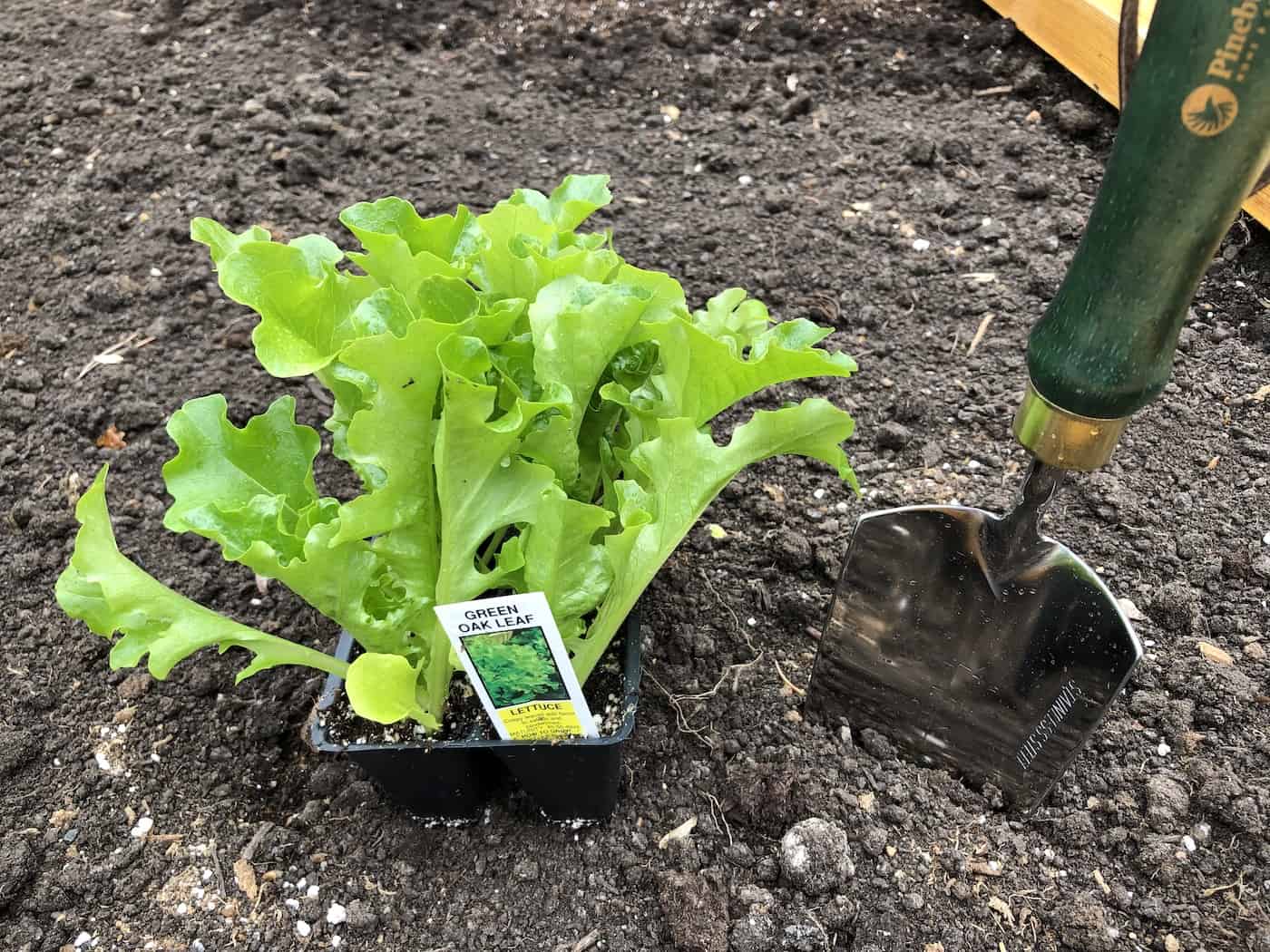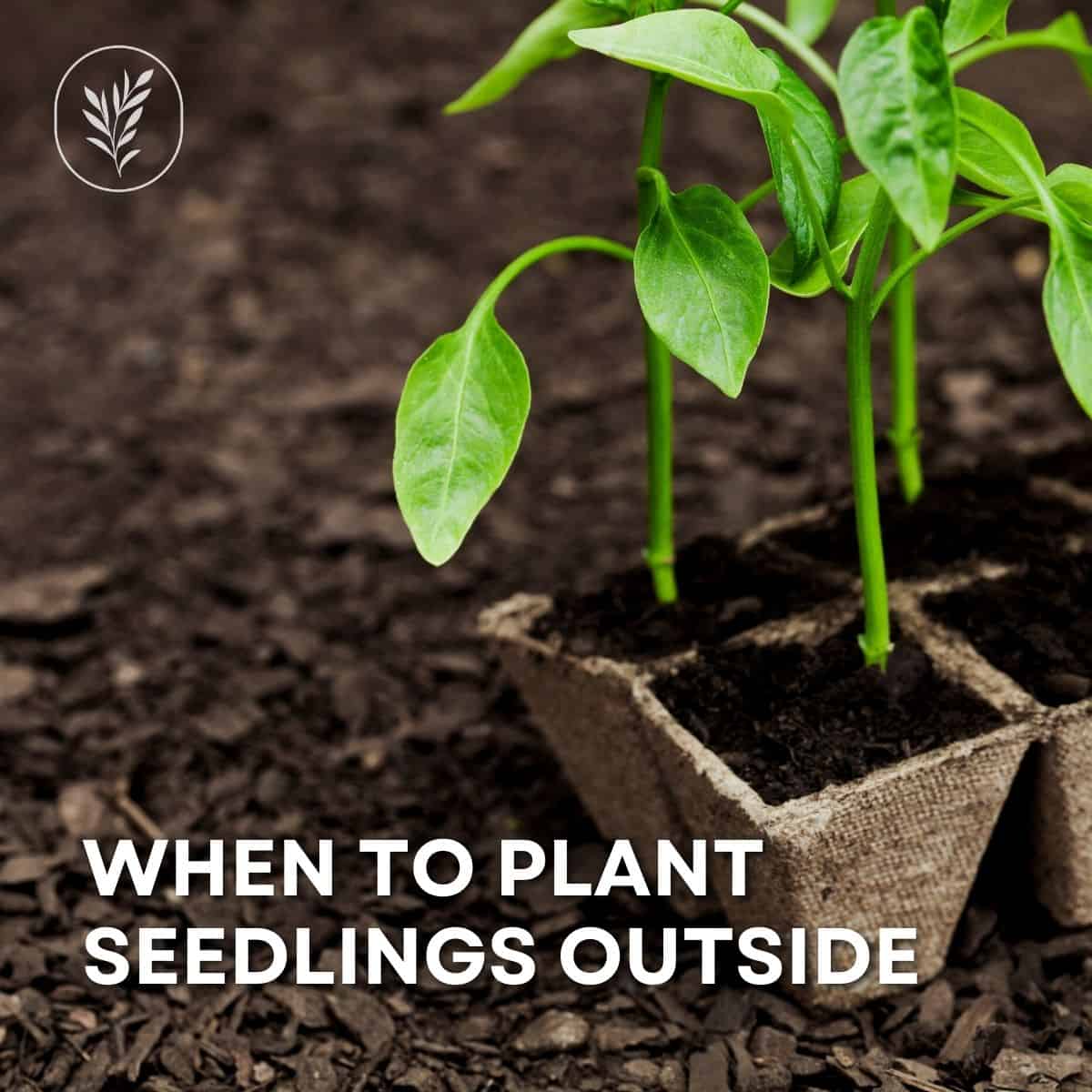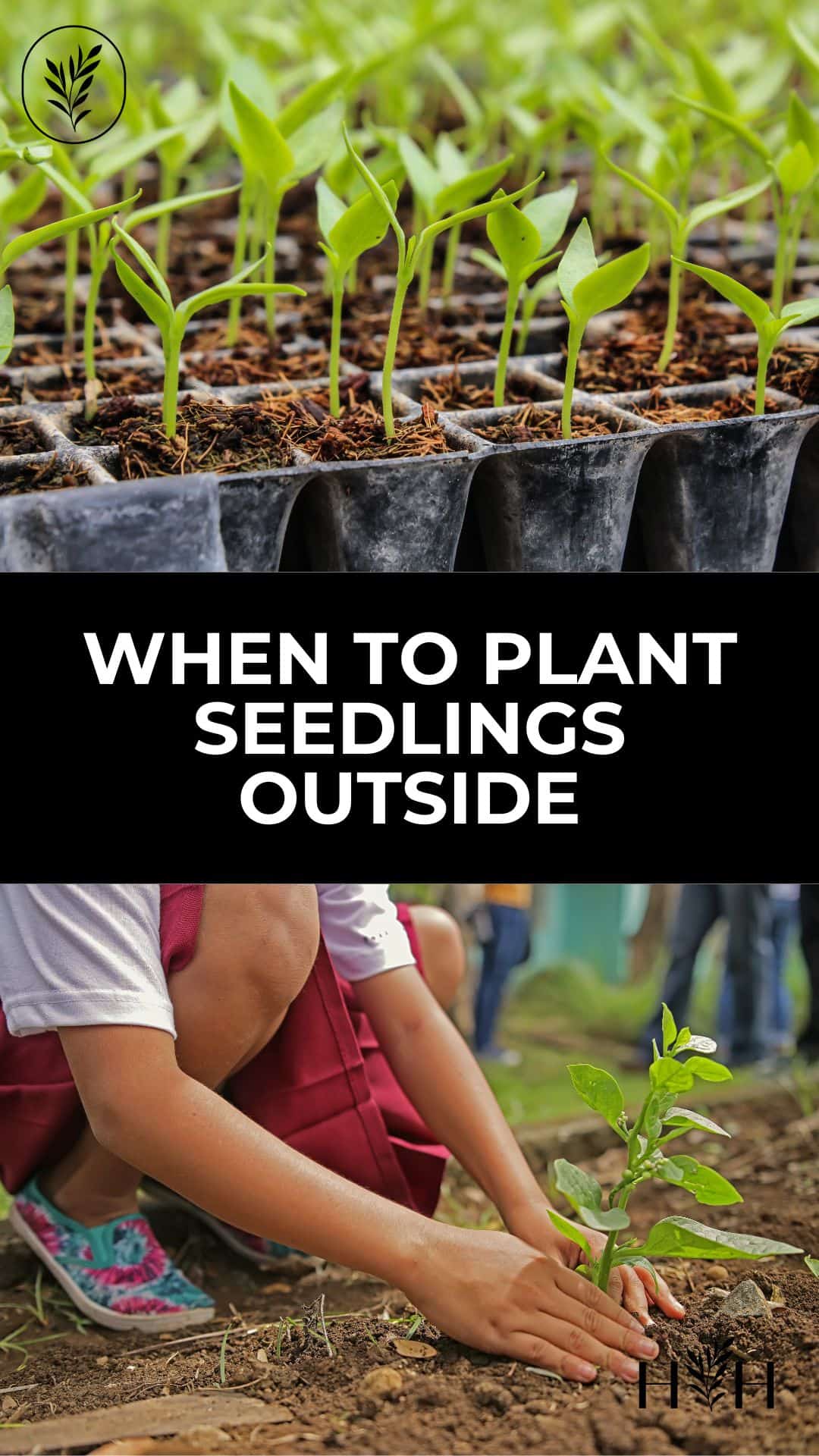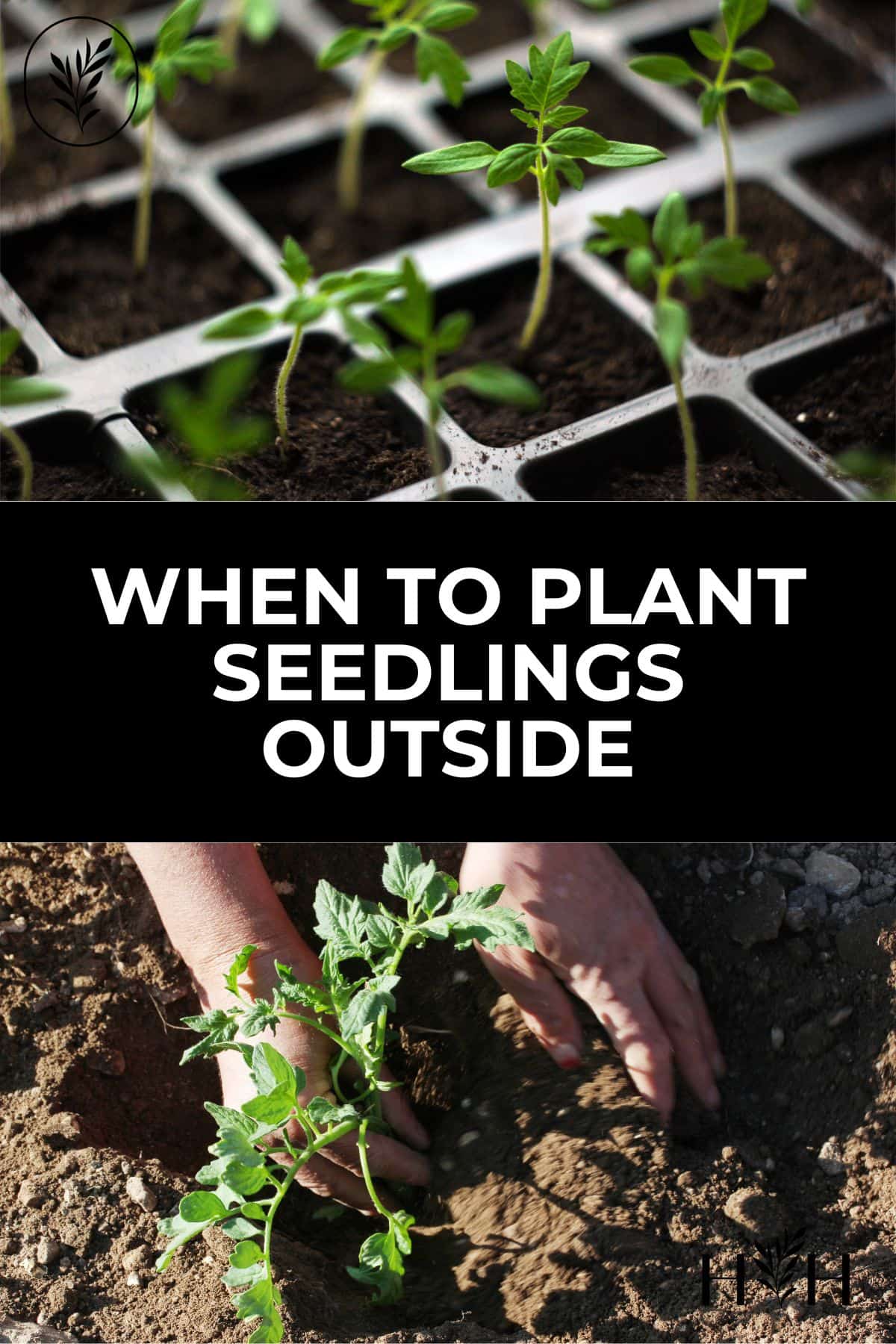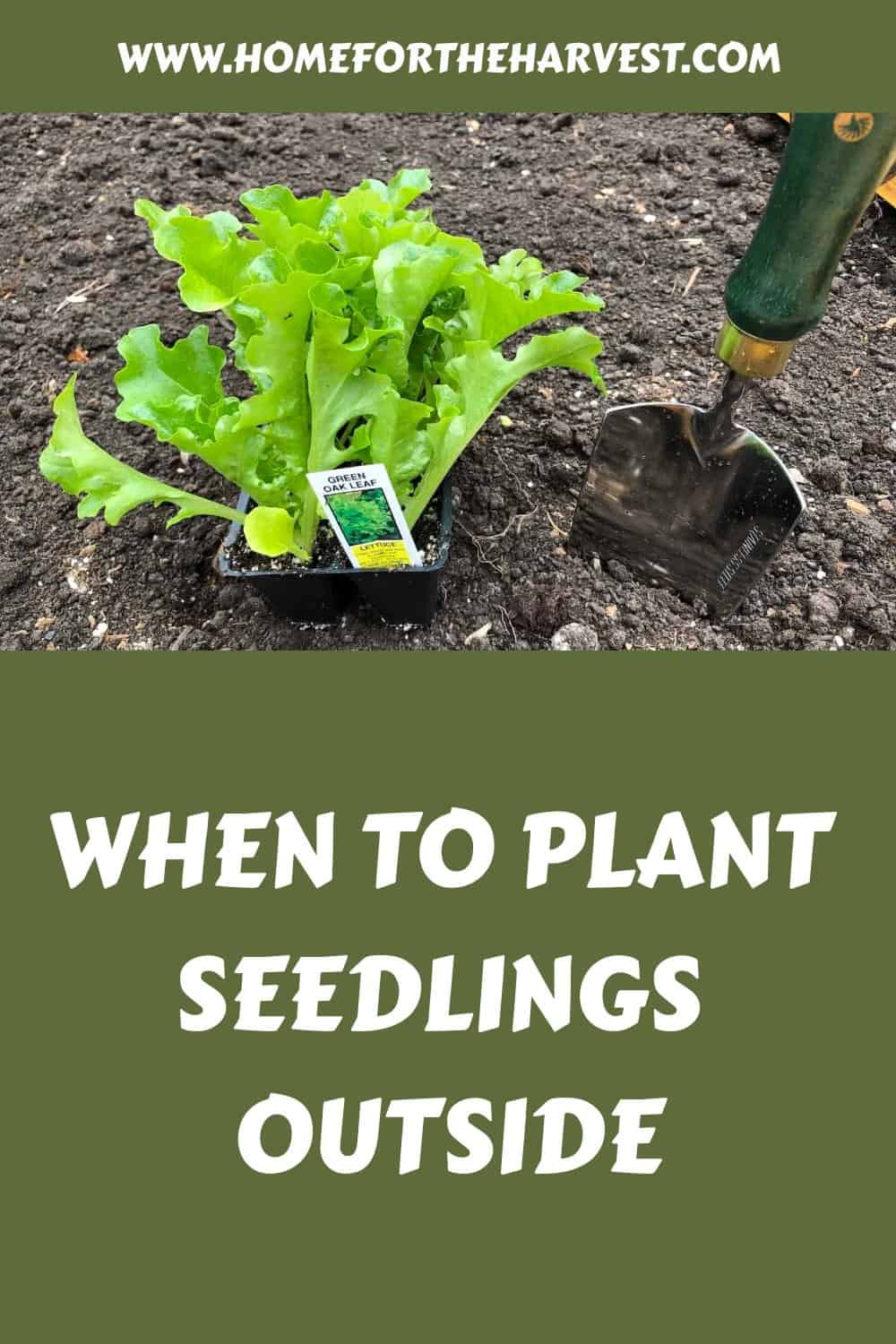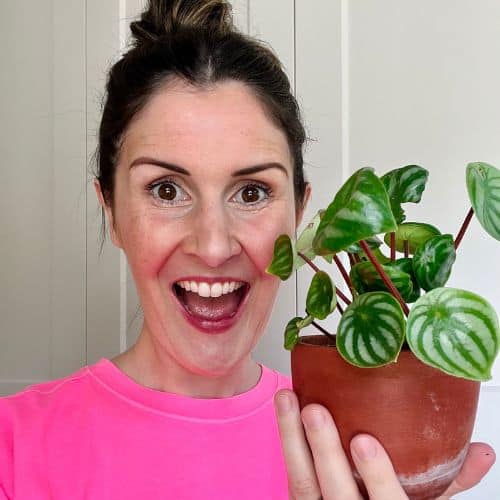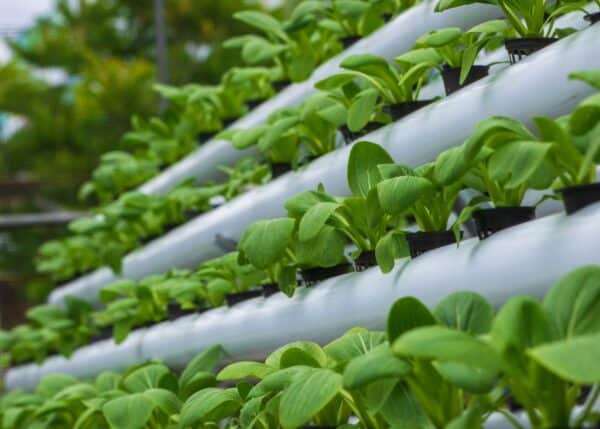Wondering when to plant seedlings outside? Timing is key – whether cool-season seedlings or warm-season seedlings, it all depends on outdoor temperatures and the state of your plants.
Seedlings are generally planted outdoors once they are about 4″-6″ tall and have grown “true leaves.” The outdoor temperature is also key, as warm-season crops like tomatoes and peppers do not grow well when temperatures are under about 50°F (10°C). That said, plants typically do best when transplanted outdoors before they start flowering and fruiting.
In this blog post, we’ll go through exactly what you need to know about planting seedlings outside so that your garden will thrive in the months ahead.
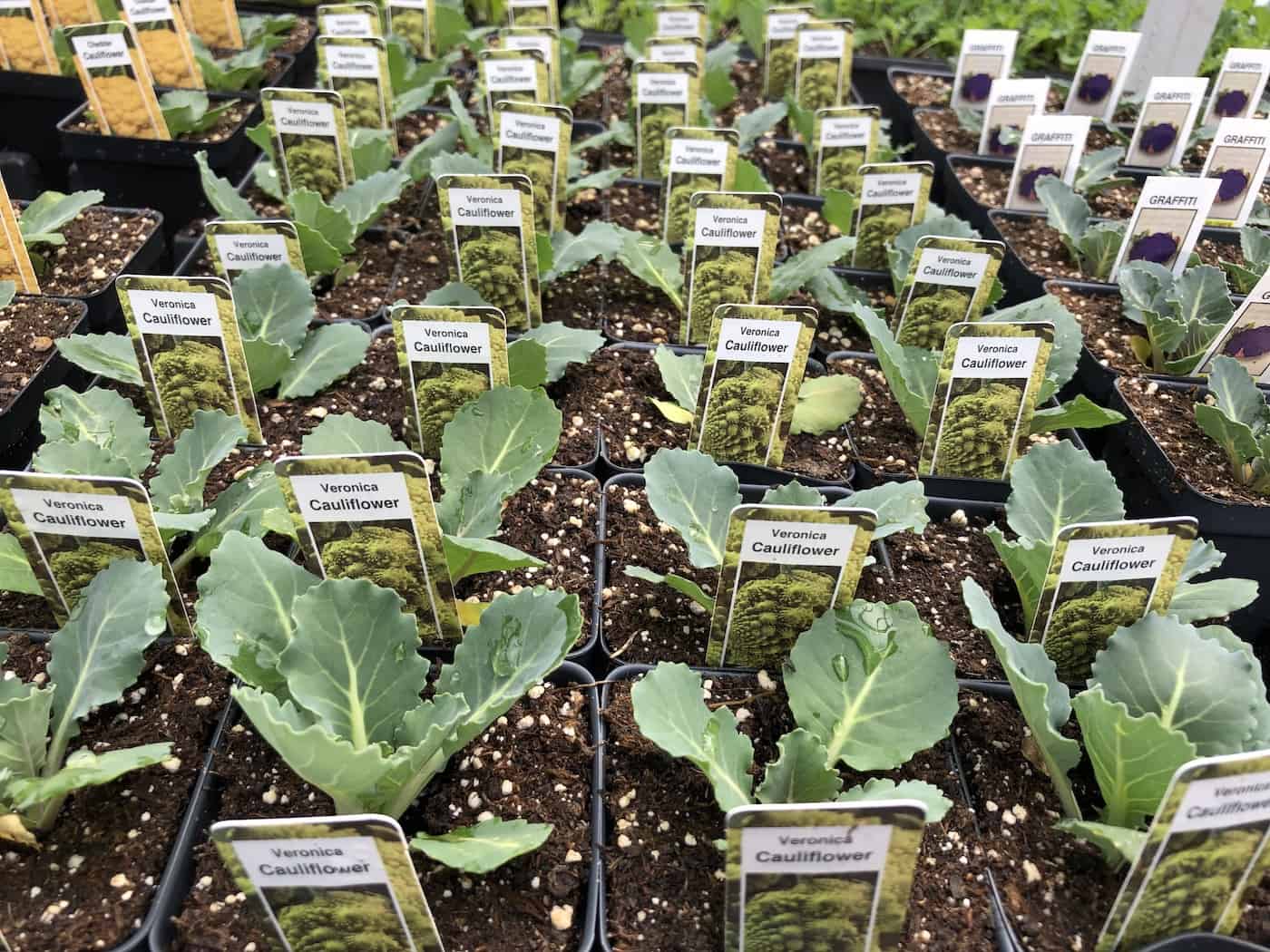
When to plant seedlings outside
The best time to plant seedlings outside depends on the type of plants you’re growing and your local climate.
Cool-season seedlings, such as broccoli, cauliflower, kale, lettuce, and spinach should be planted in early spring before the last frost date. They can deal with cooler temperatures (although you may need to cover them at night if a frost is expected).
Warm-season seedlings like tomatoes, peppers, and eggplants should be planted after the last frost date has passed and once nighttime lows don’t go much below about 50°F (10°C). These plants don’t actively grow at cold temperatures, so you’re not getting a “head start” by putting them out before the nights are not cold.
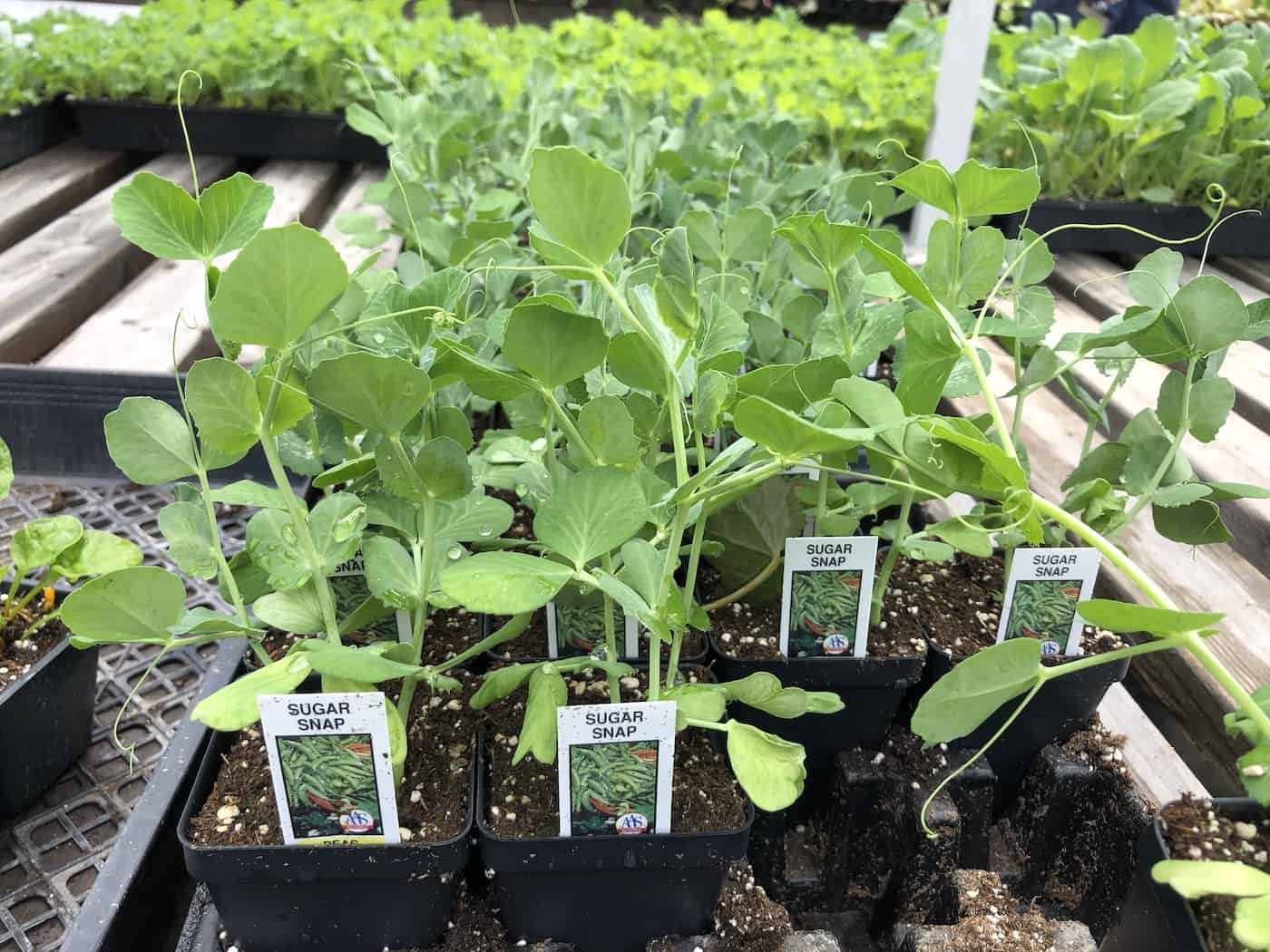
Cool season seedlings
Cool-season vegetables are hardy plants that can tolerate cold temperatures and light frosts without damage. These include lettuce, broccoli, cabbage, carrots, onions, peas, and broccoli. In terms of seedlings, you’re usually transplanting out things like lettuce, chard, and broccoli (carrot and pea seeds usually go straight into the outdoor soil).
To ensure success with these crops it is important to know when to plant them outdoors in your area so they don’t suffer from a late freeze or too much heat during their growth period. The best time for planting cool-season vegetables is typically two weeks before the average last spring frost date for your region or zone. This will give them enough time to establish themselves before any potential cold snaps arrive later in the season.
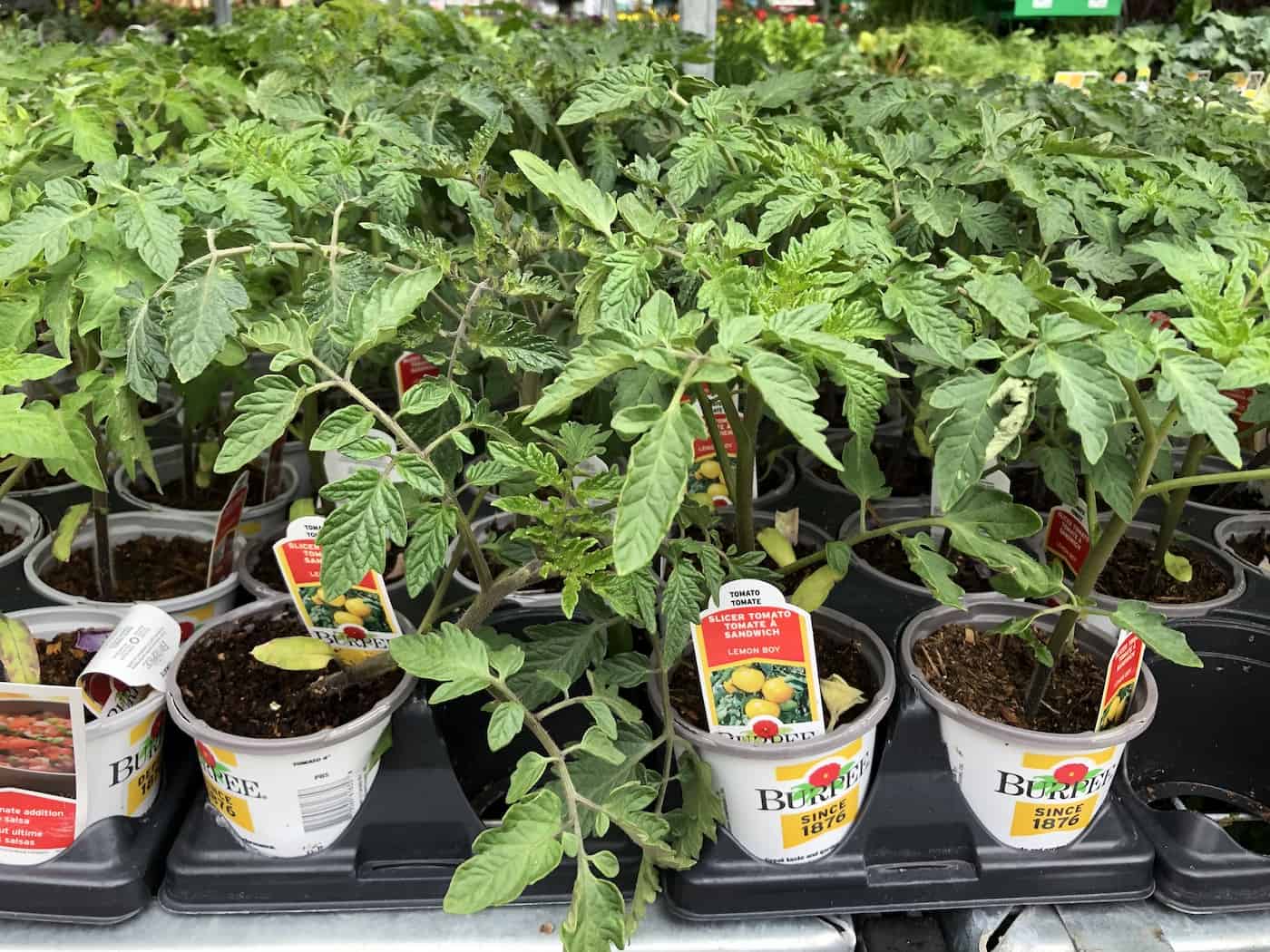
Warm season seedlings
Warm-season vegetables require warmer soil temperatures than cool-season varieties for successful germination and growth. These include beans (bush & pole), corn, cucumbers, melons, okra, squash, sunflowers, sweet potatoes, tomatoes, watermelons, pumpkins, peppers, and eggplant.
Planting warm-season vegetables too early may result in poor yields due to cooler temperatures while waiting out an extended cold spell could cause a delay in maturity leading to reduced yields at harvest time as well as increased risk of pest infestations or disease pressure if conditions remain unfavorable into summer months. Wait until outdoor daytime air temperatures consistently reach 65°F (18°C), and nighttime lows don’t fall below about 50°F (10°C). This usually occurs around two weeks after the average last spring frost date for most regions/zones across North America.
Timing based on last spring’s frost date
You can usually estimate when to plant your seedlings outdoors by using the last frost date. In general, cool-season crops like lettuce and carrots can go out 4-6 weeks before the last frost date, while warm-season crops go out 1-2 weeks after the local last frost date (assuming there is no upcoming frost events in the forecast).
Timing based on outdoor temperatures
Soil temperature also plays an important role in successful gardening; if it’s too cold, then roots won’t be able to develop properly and plants won’t grow well either. Generally speaking, the soil should reach at least 50°F (10°C) before transplanting starts taking place. A good way to monitor soil temperature is by using a thermometer designed specifically for gardening purposes; these devices are available online or at many home improvement stores and nurseries.
By understanding the different requirements of cool-season and warm-season seedlings, you can decide when to plant your seedlings outside for optimal growth and success.
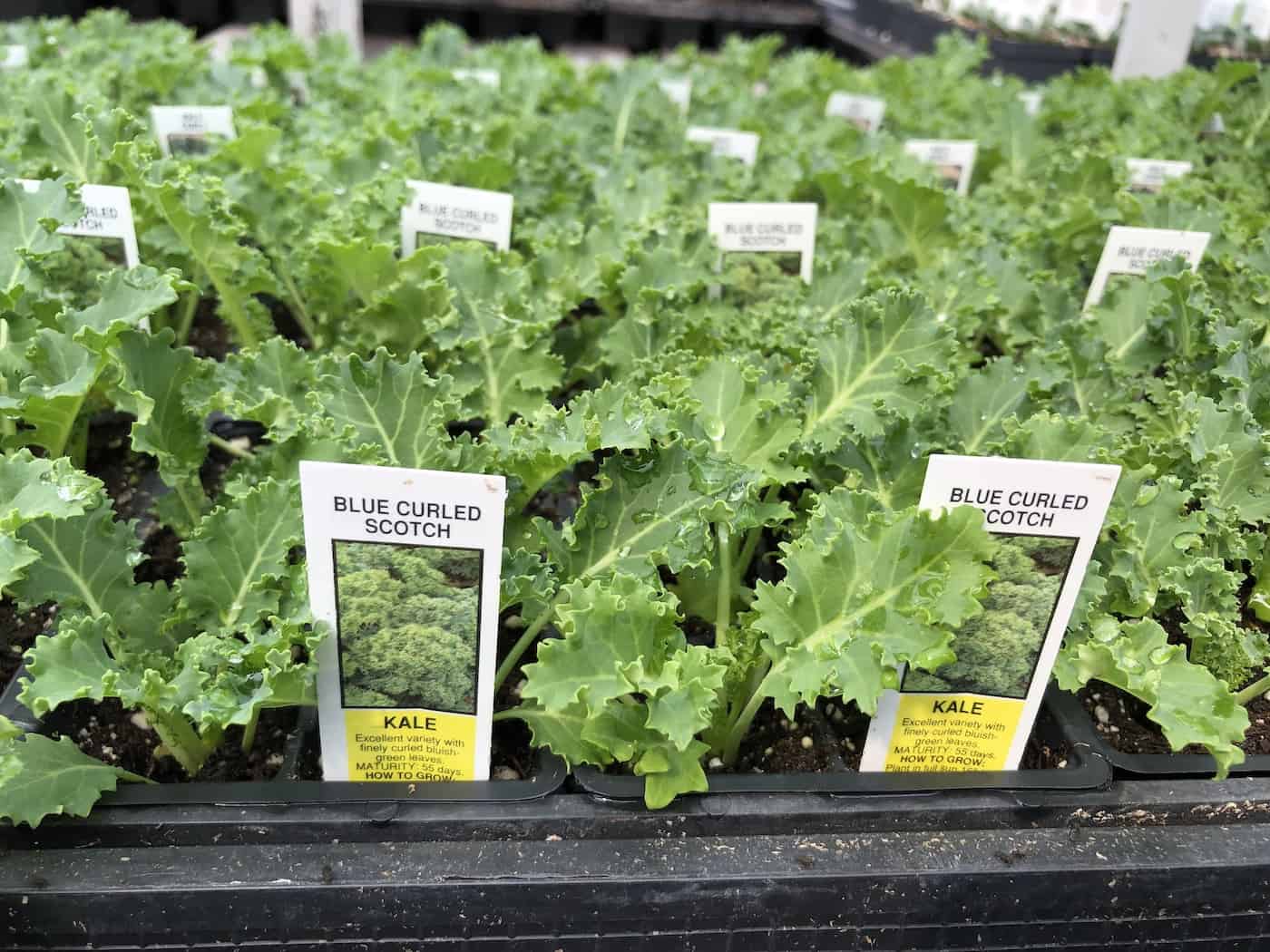
Cool season seedlings
Cool-season seedlings are a great way to get your garden started early in the spring. These types of plants prefer cooler temperatures and can be planted outdoors before the last frost date. Lettuce, spinach, kale, broccoli, cabbage, peas, and other cool-loving crops should all be planted as soon as possible after the last spring frost has passed.
The best time to plant these vegetables is when outdoor temperatures are still cool but above freezing (usually between 40-60 degrees Fahrenheit). This will give them enough warmth to start growing while avoiding any late frosts that could damage or kill young plants. If you’re unsure about when it’s safe to plant outside in your area, check with your local gardening center or extension office for more information on the average first and last frost dates for your region.
When planting cool-season seedlings outside make sure you prepare the soil beforehand by adding organic matter such as compost or aged manure. This will help ensure good drainage and aeration which is essential for healthy root growth and the development of strong stems and leaves later on in the season. Additionally, consider using row covers over newly planted seeds if there is a chance of an unexpected cold snap coming through during their germination period – this will help keep them warm until they have established themselves enough to withstand colder weather conditions without protection.
Once you have determined it is safe to plant outside based on the temperature ranges mentioned above, then simply follow the instructions provided with each individual packet of seeds carefully. Some may need light exposure while others need darkness, so make sure you read up before planting. Finally, remember that even though these veggies like cooler temperatures they still require plenty of water throughout their growing cycle, so don’t forget to give them regular hydration as well.
Cool-season seedlings are the perfect way to get your garden off to a great start but don’t forget that warm-season seedlings can also be planted in the right conditions.
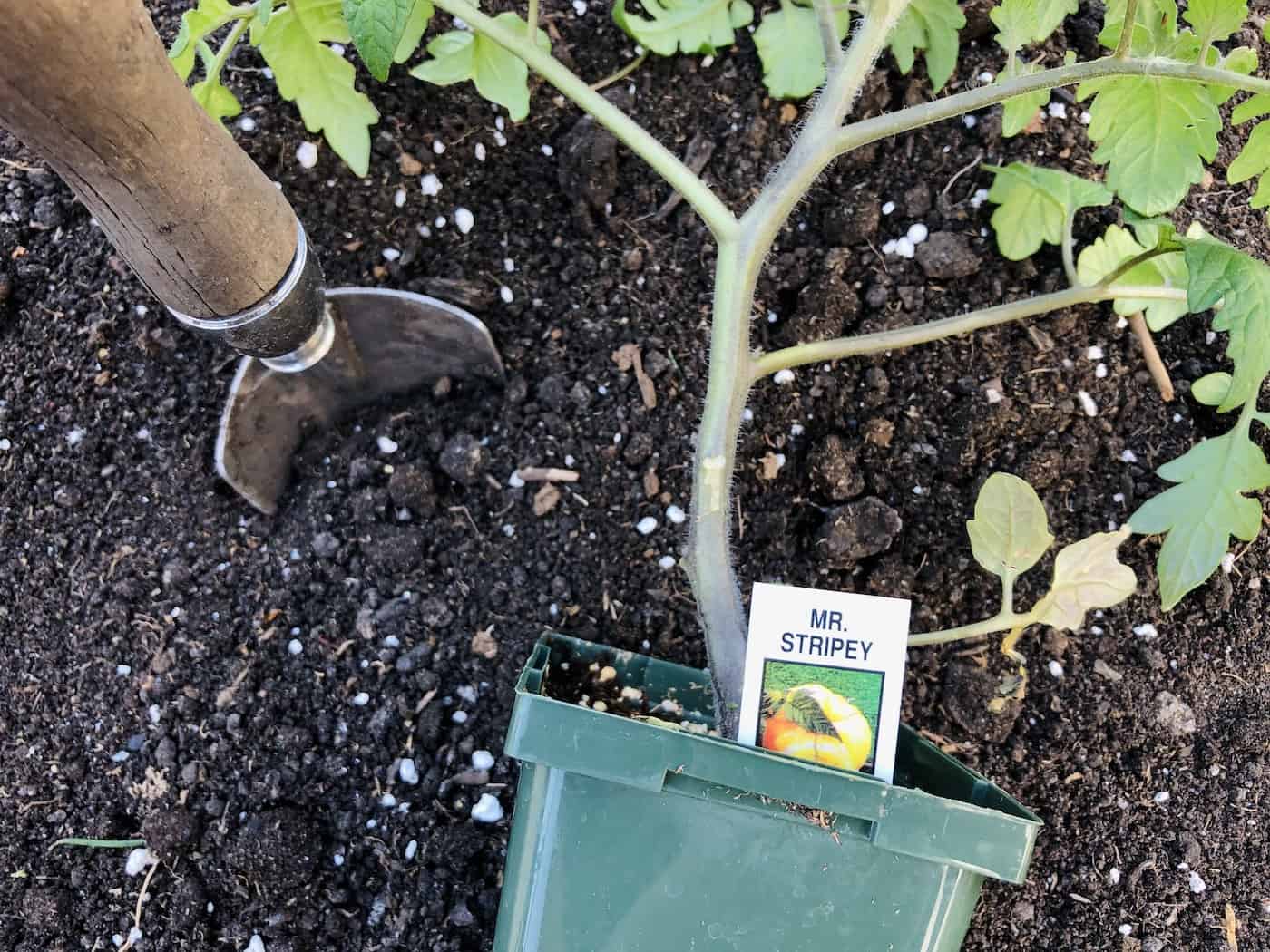
Warm season seedlings
Warm-season seedlings are those that thrive in warmer temperatures, such as tomatoes and peppers. These plants prefer soil temperatures of at least 60°F before they can be planted outside. The best time to plant warm-season seedlings is after the last spring frost date for your area has passed. This will ensure that your plants have a chance to get established before any cold weather sets in again.
When planting warm-season seedlings, it’s important to make sure you give them enough space between each other so they don’t compete for resources like water and nutrients from the soil. If you’re planting multiple varieties of vegetables, try spacing them out by type or variety so that their needs don’t overlap too much. You should also consider how tall each variety grows when deciding where to place them in your garden bed – some may need more sun than others.
It’s also important to keep an eye on outdoor temperatures when planting warm-season seedlings outdoors; if the temperature drops below 50°F during the day or night, then it might be best to wait until conditions improve before transplanting your plants into the ground. In addition, if there is a chance of frost still lingering in the late spring or early summer months, then you’ll want to cover up your newly-planted seedlings with blankets or sheets overnight just in case.
Finally, remember that even though these types of plants do well in warmer climates and soils, they still benefit from extra care and attention throughout their growing cycle. Make sure you provide adequate amounts of water without overdoing it as well as plenty of sunshine throughout their life span; this will help ensure healthy growth and strong yields come harvest time.
When planting warm-season seedlings, it’s important to take into account the last spring frost date so you can plan accordingly and ensure that your plants have the best chance of success.
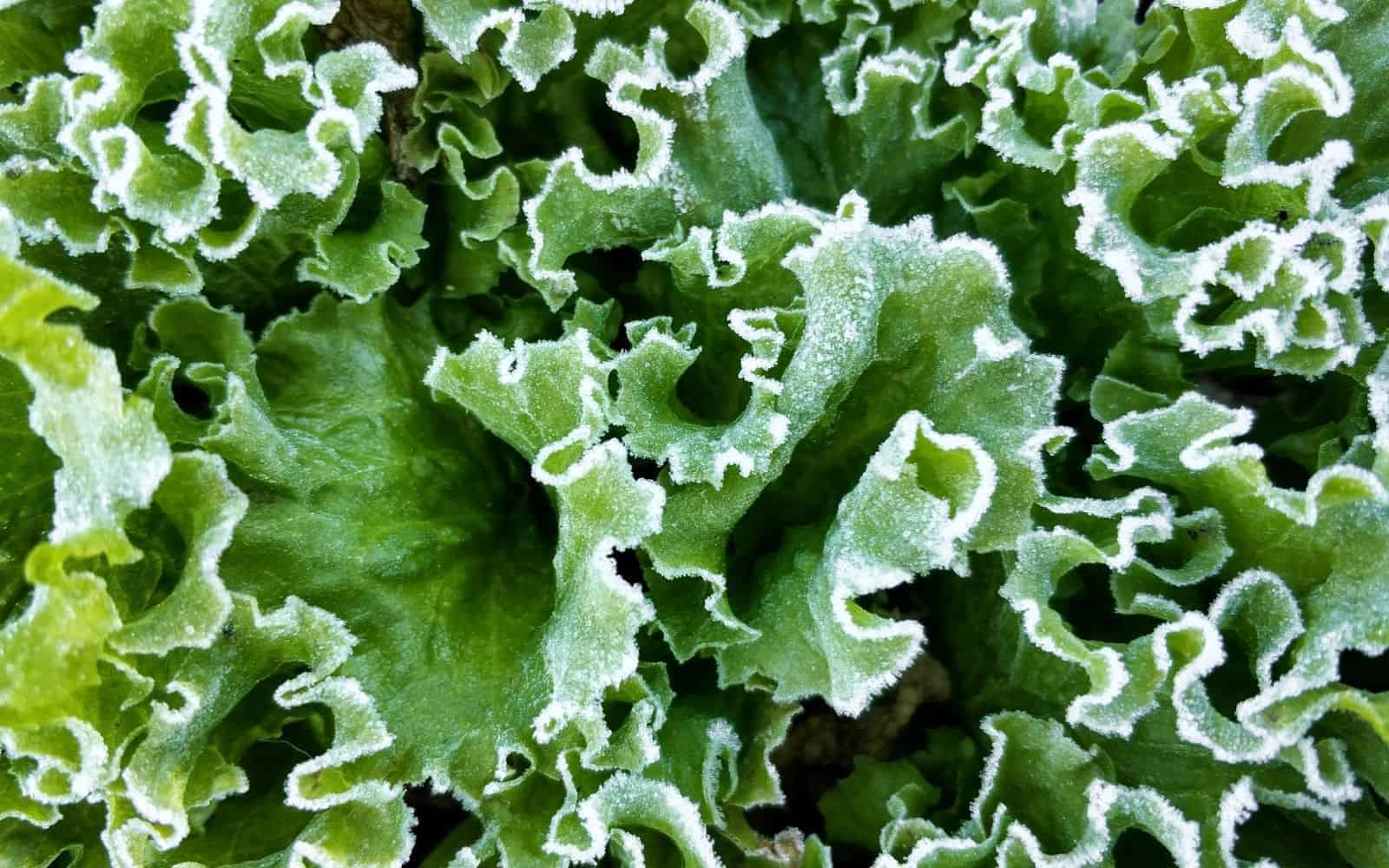
Timing based on last spring’s frost date
When it comes to planting seedlings outside, timing is key. Knowing when the last spring frost date was in your area can help you determine when it’s safe to plant your seedlings outdoors. The last spring frost date marks the end of a period where temperatures are cold enough for frost and snow. It usually occurs between late March and early May, depending on where you live.
If you’re planting cool-season vegetables like broccoli or cauliflower, aim to get them into the ground two weeks before the last spring frost date in your area. This will give them time to establish their roots before any potential frosts arrive. If possible, wait until after the last spring frost has passed if you want larger plants with more robust yields to come harvest time.
Warm-season vegetables such as tomatoes and peppers should be planted about two weeks after the last spring frost date has passed in your area; this gives them plenty of time to mature without being damaged by any unexpected cold snaps that may occur during the early summer months. Keep an eye on outdoor temperatures too – once they reach around 60°F (15°C) consistently during daytime hours, it’s generally safe to start planting warm-season veggies outdoors.
No matter what type of vegetable you plan on growing this year, make sure that soil temperature is taken into account as well; many seeds won’t germinate unless soil temperature reaches at least 40-50°F (4-10°C). You can use a thermometer specifically designed for measuring soil temperature or stick your finger down into the dirt – if it feels cool but not freezing cold then chances are good that conditions are ideal for planting.
Finally, don’t forget about hardening off young seedlings before transplanting them outside; this process helps acclimate plants from indoor life so they don’t suffer shock when exposed directly to outdoor elements like wind and sun exposure all at once. Start by placing newly potted seedlings outside in a sheltered spot for short periods each day over several days until they’re ready for permanent placement in their garden beds or containers. Happy gardening
When the last spring frost date has passed, it’s time to consider outdoor temperatures and other factors that may affect when you should plant your seedlings.
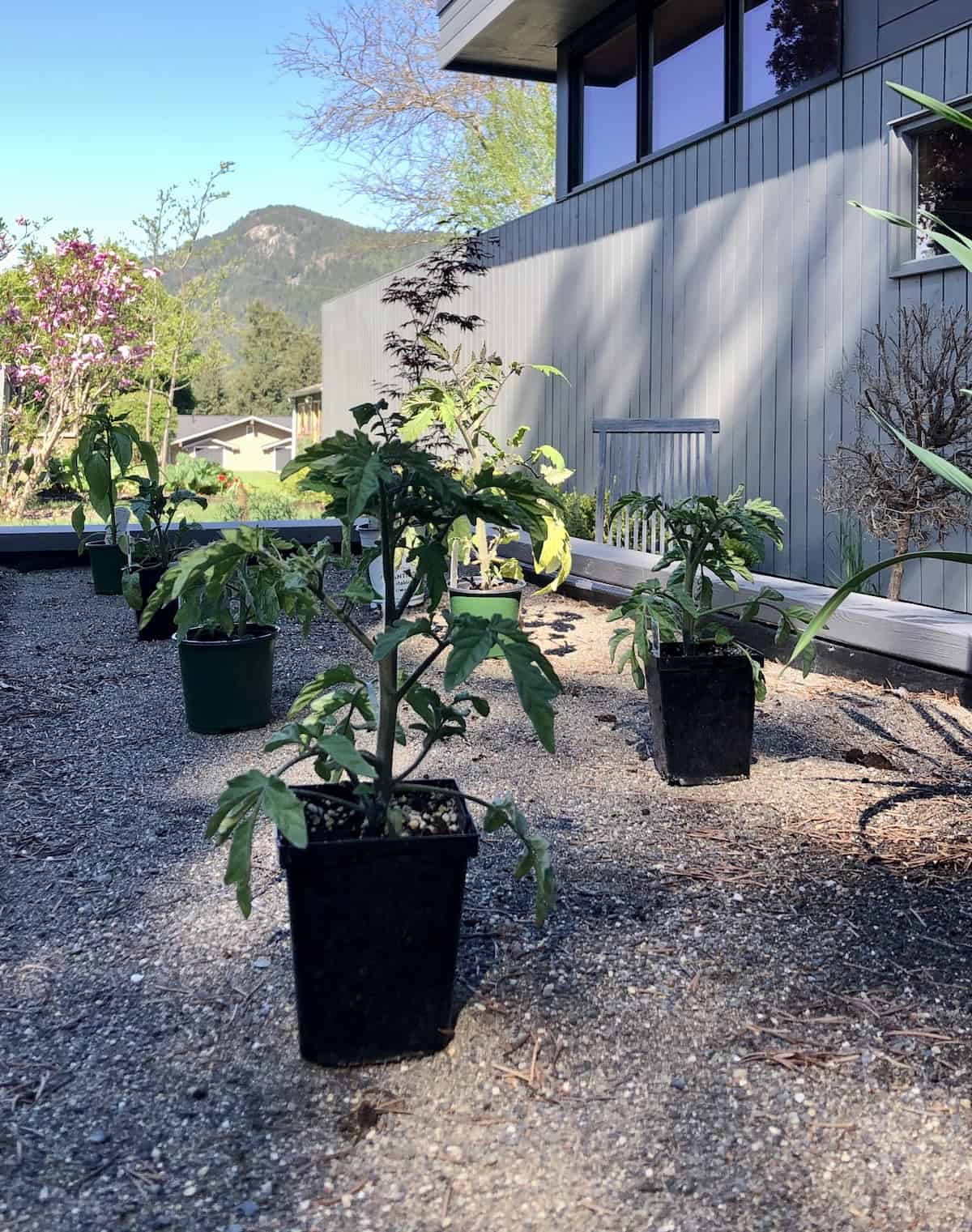
Timing based on outdoor temperatures
Knowing when to plant your seedlings can make the difference between a successful garden and one that fails. One of the most important factors in determining when to plant is the outdoor temperature.
Cool-season plants such as lettuce, spinach, kale, broccoli, and cauliflower should be planted in early spring before temperatures rise too high. These plants prefer cooler temperatures and will not do well if exposed to heat for extended periods of time. Planting these cool-season crops in late winter or early spring ensures they get enough chill hours before summer arrives so they can thrive throughout the growing season. It’s best to wait until nighttime temperatures are consistently above 40°F (4°C) before planting cool-season vegetables outside.
Warm-season vegetables like tomatoes, peppers, squash, and eggplant need warmer soil temperatures for germination than their cool-season counterparts; typically 60–85°F (15–29°C). When air temperatures reach somewhere around 70°F (21°C) during the day with no risk of frost overnight you can safely start planting warm-season veggies outside without fear of them getting damaged by cold weather conditions later on down the line.
It is important to know when your last average spring frost occurs each year, as it varies depending on location and usually falls around mid-April – mid-May. To avoid damage from an unexpected cold snap, wait until after this date has passed before planting warm-weather-loving plants in the garden beds. If unsure of the exact date, consult local nurseries or extension offices for records of past years’ dates for reference purposes.
Monitoring daytime highs and lows closely using thermometers placed both inside and out is a more accurate way of predicting safe planting times. This will give you a better idea of whether or not it is safe yet for certain types of vegetable seeds/seedlings, as they all have different requirements based on their individual needs regarding warmth versus chill hours needed prior to being put into the ground outside.
FAQs about when to plant seedlings outside
How big should seedlings be before transplanting?
When transplanting seedlings, it is important to consider their size. Generally speaking, the ideal size for a seedling before transplanting is between 3 and 4 inches tall with at least two sets of true leaves. It should also have a strong root system that has filled out its container or cell pack. Transplanting too early can result in stunted growth or even death of the plant while waiting too long can lead to overcrowded roots and other issues. Therefore, timing your transplant carefully is key for successful gardening.
What temperature can seedlings go outside?
The temperature at which seedlings can be safely moved outdoors varies depending on the species and the climate. Generally, when nighttime temperatures are consistently above 50°F (10°C), seedlings can be transplanted outside. However, if you live in an area with cooler nights or have a particularly sensitive variety of plants, it is best to wait until night temperatures reach 55-60°F (13-15°C) before moving your seedlings outdoors. Additionally, hardening off your plants by gradually exposing them to outdoor conditions over several days will help them adjust better to their new environment.
What month do you plant seedlings?
The best time to plant seedlings depends on the type of plants you are growing and your local climate. Generally, in North America, it is recommended to start planting seedlings in late March or early April for most cold-hardy vegetables and flowers. However, if you live in a warmer region with mild winters, you may be able to get away with starting earlier. Additionally, some hardy plants can tolerate cold temperatures better than others so they can be planted as soon as the soil has thawed out enough for them to take root. It’s important to research what types of plants will do well in your area before deciding when to plant them.
Before you go…
As you can see, planting seedlings outside is a great way to get your garden growing. It’s important to consider the timing of when you plant based on the last spring frost date and outdoor temperatures for cool and warm season plants. With a little bit of planning and preparation, you’ll be able to enjoy beautiful blooms in no time. Planting seedlings outside is an easy way to bring beauty into your home or yard without having to be an expert gardener.
Resources
- The best garden catalogs for seeds, live plants, tools, and supplies
- Types of seeds: Open-pollinated, heirloom, organic, hybrid, & non-GMO
- Best seeds for winter sowing
- Winter sowing guide for planting seeds outdoors in cold climates
References
- Apps-Bodilly, S. (2022). Seeds in Soil: Planting a Garden and Finding Your Roots. Wisconsin Historical Society
- Heffernan, M. (1997). Burpee Seed Starter: A Guide to Growing Flower, Vegetable, and Herb Seeds Indoors and Outdoors. Macmillan USA.
- Hahn, K. (2022, April 22). Good soil, sunlight, fertilizer and water all key to maximizing garden productivity. Cheboygan Daily Tribune. Retrieved February 12, 2023, from https://www.cheboygannews.com/story/news/2022/04/22/good-soil-sunlight-fertilizer-and-water-all-key-maximizing-garden-productivity/7384301001/
Need more info?
Are you interested in learning more about when to plant seedlings outside? Here are our best articles about it!


